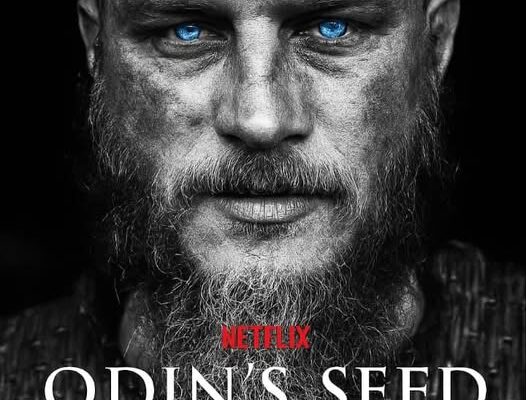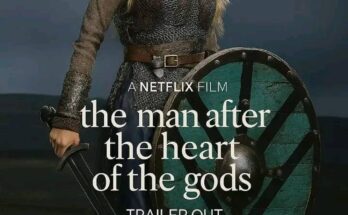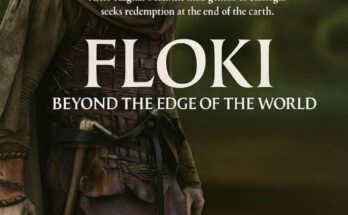Just Released Netflix Movie Odin’s Seed: A Myth Forged in Blood, Destiny, and Immortality
The release of Netflix’s latest cinematic venture, Odin’s Seed: A Myth Forged in Blood, Destiny, and Immortality, has captivated audiences across the world, presenting not just another fantasy epic but an ambitious retelling of Norse mythology through the lens of both myth and imagination. This film dares to explore the power struggles between gods and mortals, the allure of immortality, and the eternal search for meaning in a world where fate is both written and contested. With its breathtaking visuals, layered performances, and a script that treats mythology not as distant legend but as a living, breathing force, the film has quickly become one of Netflix’s boldest forays into mythological storytelling.
At its heart, Odin’s Seed asks what it means to inherit power that was never meant to be yours. The story revolves around a mortal child born under the shadow of Odin’s ambition, a seed of the Allfather’s essence planted not in Asgard but in Midgard, the realm of men. This premise immediately sets the film apart from traditional retellings, for instead of focusing solely on the gods, it dares to bridge the divine and the mortal in a way that questions the very boundaries between them. What is blood if not a tether between realms? What is destiny if not the chain that binds both gods and men alike? These questions form the spine of the narrative, pulling viewers deep into a world where prophecy and choice collide with devastating consequences.
The protagonist, known simply as Eirik in the film, is the child of prophecy, his birth a secret hidden even from the gods themselves. Raised in obscurity among fishermen and warriors on the harsh northern coast, Eirik’s life is marked from the beginning by strange omens and visions that haunt his dreams. The filmmakers take care to ground his early life in brutal realism—the hunger of long winters, the constant threat of raiders, the endless toil of survival—before slowly unraveling the layers of his hidden identity. When he begins to display unnatural strength and glimpses of foresight, his tribe fears him as much as they revere him. The tension between his humanity and his godly essence is not just external but deeply internal, as he struggles to reconcile who he is with what he is destined to become.
The film thrives on its atmosphere, capturing the raw landscapes of Norway with sweeping shots of fjords, frozen lakes, and towering pine forests that serve not only as a backdrop but as a character in their own right. Nature feels alive in Odin’s Seed, both beautiful and merciless, echoing the duality of the protagonist’s journey. This is not a world of polished fantasy kingdoms but of mud, blood, and fire, where every step carries the weight of survival. The cinematography brings the myth to life without stripping it of its primal grit, grounding the divine in the dirt of the mortal.
The narrative escalates when Eirik learns that his blood carries a fragment of Odin’s essence, placed upon Midgard as part of a hidden pact. The Allfather, fearing the twilight of the gods foretold in Ragnarok, sought to secure a seed of himself beyond Asgard, believing that through this act his spirit could endure even when doom arrived. Yet what Odin intended as insurance becomes a curse for Eirik, who finds himself hunted by those who see him as a threat and courted by those who would exploit his gift. The film carefully balances this mythological weight with emotional intimacy, showing Eirik not merely as a pawn in divine schemes but as a young man torn between love for his people and the terrifying pull of immortality.
The supporting cast elevates the story further. A seeress, cloaked in shadow, becomes both guide and antagonist, whispering prophecies that push Eirik toward choices he wishes to avoid. A band of warriors pledge themselves to his cause, not for the promise of immortality but for the belief that his destiny might shield their children from despair. Odin himself looms over the film like a storm, rarely appearing in full but felt in every gust of wind, every crack of thunder, his voice echoing through dreamlike visions. The filmmakers wisely keep Odin both omnipresent and elusive, a figure of immense power whose true motives remain obscured, adding to the sense of dread that permeates the narrative.
As the story unfolds, blood becomes both symbol and substance. Battles are fought with visceral intensity, the clash of steel and the cries of dying men filmed with unflinching realism. Yet blood also signifies lineage, sacrifice, and the bond between gods and mortals. Eirik must decide whether to embrace his divine seed and transcend mortality or to remain bound to the fleeting yet meaningful existence of man. This central dilemma resonates as more than a mythological choice—it is a reflection of the human condition itself, the eternal struggle between reaching for eternity and embracing the beauty of finite life.
The climax of Odin’s Seed is both tragic and triumphant, weaving prophecy and free will into a single thread. Eirik confronts not only the enemies who seek his power but also the legacy of Odin himself. In a haunting sequence, he enters a vision of Yggdrasil, the world tree, where the fates of realms hang in balance. Here the visuals soar into the realm of the surreal, with roots and branches stretching into infinity, shimmering with runes of fire and frost. The confrontation between father and son, god and mortal, seed and root, is less a battle of swords than of wills, a reckoning that leaves the audience questioning not only the fate of the characters but of myth itself.
What makes Odin’s Seed remarkable is that it never settles for being a straightforward fantasy epic. It is myth reimagined through the lens of modern storytelling, infused with themes of legacy, identity, and mortality. The film dares to ask whether immortality is a gift or a curse, whether destiny is written by the gods or forged by human hands, and whether even the mightiest myths can survive without the blood of those who believe in them. It does not present easy answers, but rather leaves viewers with the haunting sense that myths are alive, shaped by those who tell them and those who live them.
The performances bring depth to this grand narrative. The actor portraying Eirik captures the vulnerability of a boy thrust into a role he never asked for, while embodying the quiet strength of a leader who must rise to the occasion. The seeress, played with chilling gravitas, embodies the uncertainty of prophecy, her presence a reminder that knowledge of fate does not free one from its chains. And though Odin appears sparingly, his presence is felt in every frame, a testament to the skill of both the actor and the direction in portraying a god whose essence is more than physical.
In its final moments, Odin’s Seed embraces ambiguity. Eirik’s choice reverberates across realms, but the outcome is left deliberately open, a thread that lingers in the minds of the audience long after the credits roll. This refusal to tie the story into a neat bow gives it a timeless quality, much like the myths it draws from, ensuring that its legacy will be debated and reinterpreted for years to come.
Netflix has taken a bold step with Odin’s Seed, delivering a film that is as much a meditation on mythology as it is a cinematic spectacle. It does not simply retell Norse legend but reshapes it, forging something new from ancient blood. In doing so, it offers a story that is both intimate and epic, brutal and beautiful, mortal and immortal. It is a myth forged not just in blood and destiny, but in the imagination of all who watch it, carrying forward the eternal flame of storytelling into the modern age.



